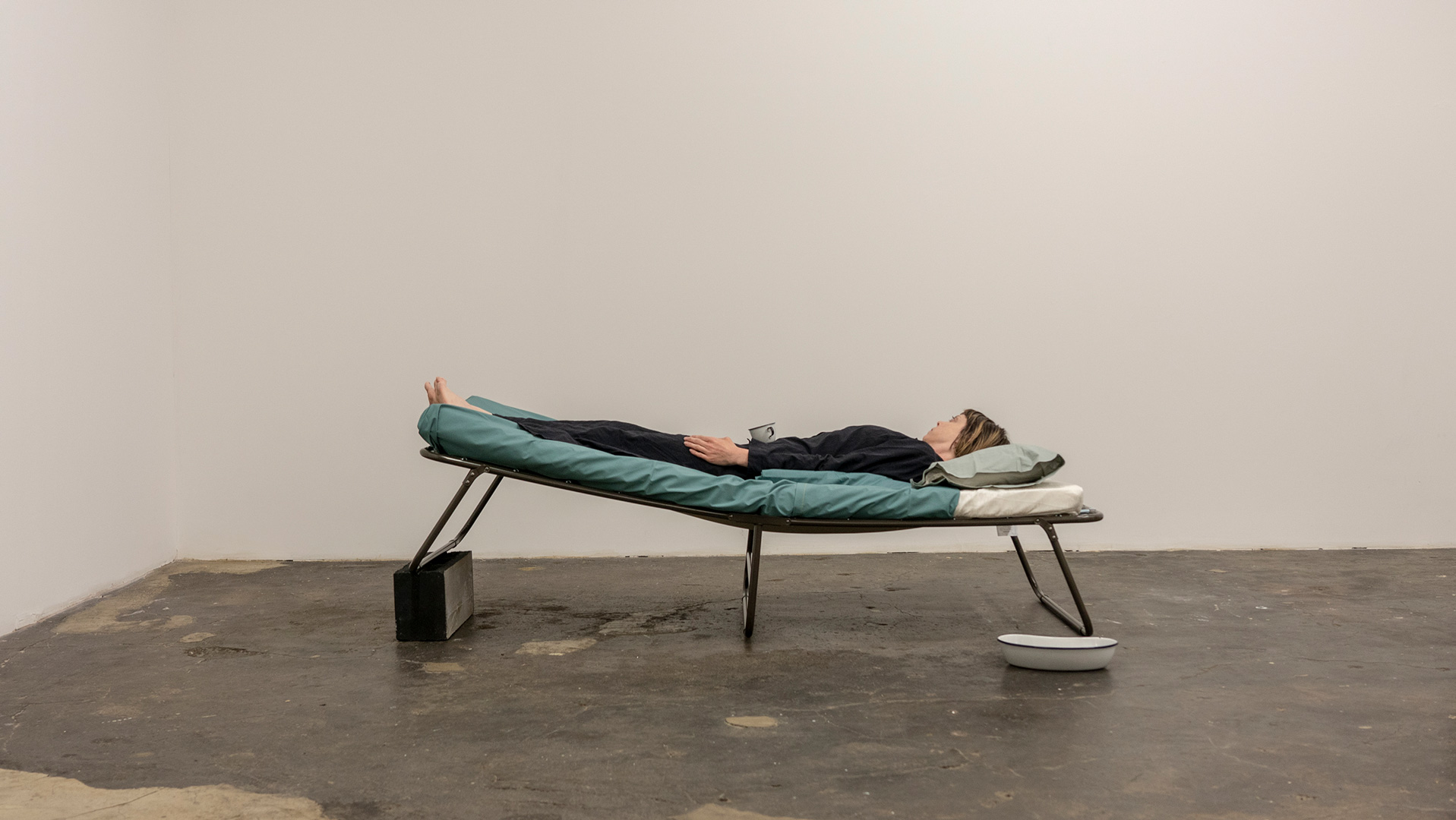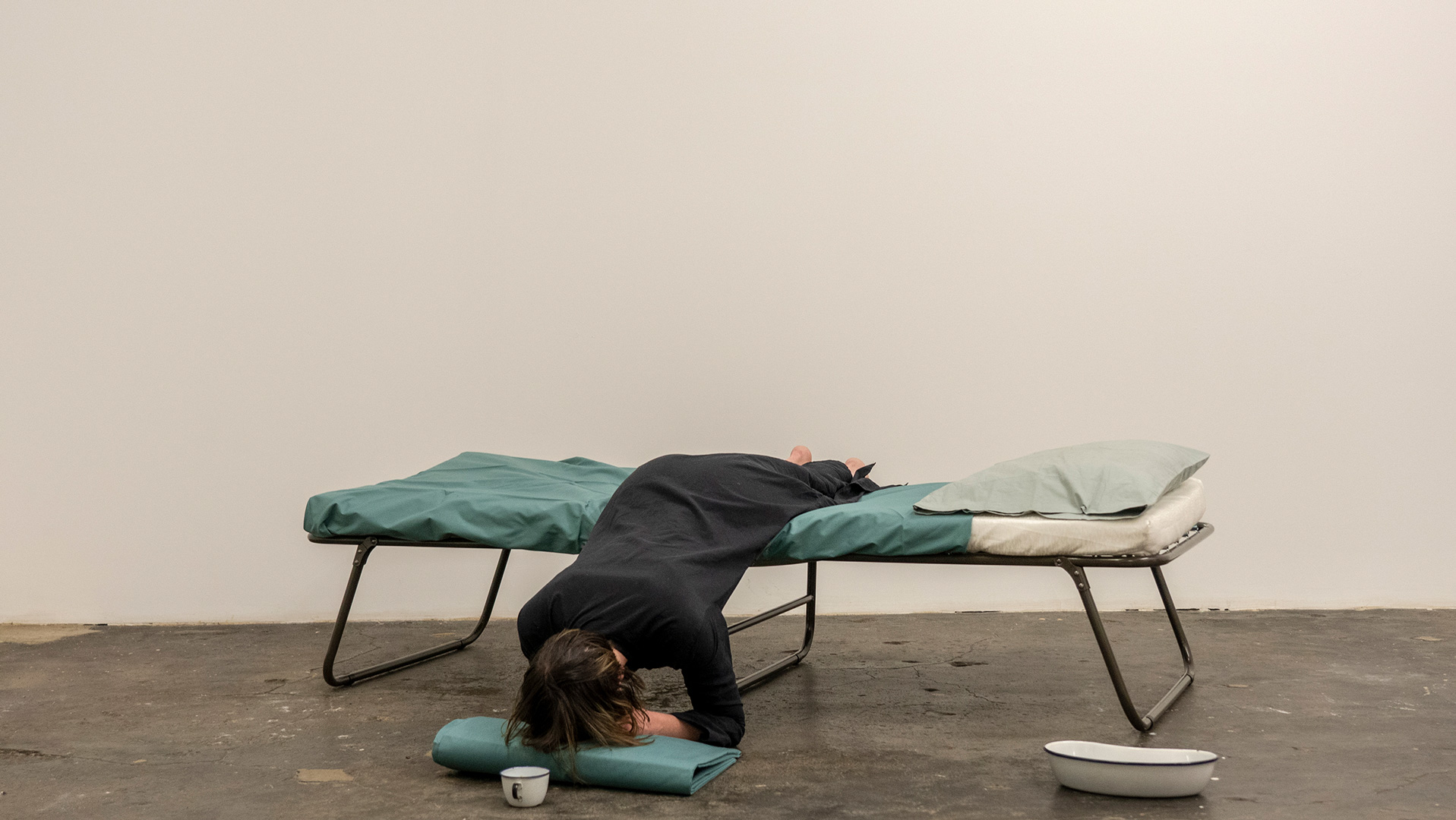Victoria Keddie’s work explores the cacophony of media ecologies that we operate within, both as an intimate and planetary exchange. The technologies built for transmission come from universal principles of electromagnetic energies. In relatively recent history, these tools for transmission within an unregulated sphere of communication systems, have altered our ways of seeing, being, and communicating in the world. The overwhelming level of radiation and energy reaching to, and passing through our bodies place us in a new phase in the Anthropocene. No longer are we participating at will, rather, we are engrossed in a system that merges the animate with the inanimate in a congealed machinic exchange between the signal and the receiver. Victoria’s focus is to expose the particular gestures of the body in tandem with tools of broadcast and transmission and to decipher the patterns that have become an operative language with the machines she works with.
"The technologies built for transmission have shaped our ways of seeing, being, and communicating in the world. Reality can be depicted through phenomena of gestures and technological narratives. From the spatial to the temporal, the synchronization of time and image are epistemological within the ecology we maneuver within. We find ourselves no longer participating at will, but engrossed in a system that merges the animate with the inanimate in a congealed machinic exchange between the signal and the receiver. In the way of being, technologies are built as instruments, as exterior and interior aids to amplify or remediate bodily function. Within the medical field, these technologies have, through trial and error, become a life force for human existence. Here, the machine mimics the body, as does the human body to the machine in a deliberate exchange. The animate morphs again with the inanimate to create a new body assemblage. My work, Exercising Consumption, reimagines a photographic diagram exemplifying experimental techniques to aid a patient’s ability to breathe. Taken from the Paimio Sanatorium in Finland, these techniques were designed in an urgent attempt to counter Tuberculosis at the turn of the 20th century. In the effort to rehabilitate, patients were instructed to perform a number of physical breathing exercises. As the active exercise was out of the question, a series of horizontal holding positions using cot beds as armatures were developed to help drain the lungs and aid respiration. The video and photographic diagram detail 12 positions in total that the patients would rotate between in the effort to breathe. Two images (11-12) detail resting positions post-surgery. Implementing the basic set present in the diagram (bed, blocks, spitting cup), I performed each of the holding positions as the patient would exercise them. In this temporal pause, time slows down to focus on breath-as-action. We hold our breath before the lens to be captured, documented, and remembered- moving in the most basic and necessary mechanics of this animated exchange."
Victoria Keddie New York, USA. April 13, 2020
Exercising Consumption#1 (2019)
UV printExercising Consumption#2 (2019)
UV printExercising Consumption#3 (2019)
UV printExercising Consumption#4 (2019)
UV printExercising Consumption#5 (2019)
UV printExercising Consumption#6 (2019)
UV printExercising Consumption#7 (2019)
UV printExercising Consumption#8 (2019)
UV printExercising Consumption#9 (2019)
UV printExercising Consumption#10 (2019)
UV printExercising Consumption#11 (2019)
UV printExercising Consumption#12 (2019)
UV printExercising Consumption (2019)
Full HD video, soundMy work, Exercising Consumption, reimagines a photographic diagram exemplifying experimental techniques to aid a patient’s ability to breath. Taken from the Paimio Sanatorium in Finland, these techniques were designed in an urgent attempt to counter Tuberculosis at the turn of the 20th century. In the effort to rehabilitate, patients were instructed to perform a number of physical breathing exercises. As active exercise was out of the question, a series of horizontal holding positions using cot beds as armatures were developed to help drain the lungs and aid respiration.
The video and photographic diagram details 12 positions in total that the patients would rotate between in the effort to breath. Two images (11-12) detail resting positions post-surgery. Implementing the basic set present in the diagram (bed, blocks, spitting cup), I performed each of the holding positions as the patient would exercise them. In this temporal pause, time slows down to focus on breath-as-action. We hold our breath before the lens to be captured, documented, and remembered- moving in the most basic and necessary mechanics of this animated exchange.
Victoria Keddie











